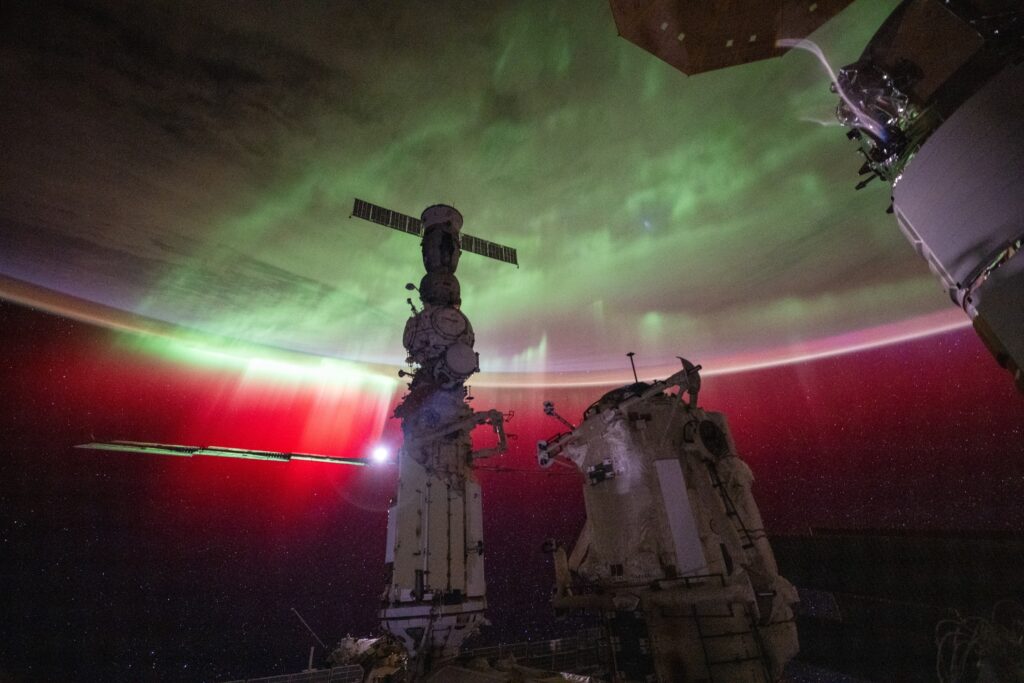NASA astronaut Matthew Dominic shared a very impressive image taken from the ISS. It shows the aurora borealis.

Several coronal mass ejections have reached Earth in recent days. In the vicinity of our planet, charged solar wind particles collided with the surrounding magnetic shield. This excited the atoms in the upper atmosphere, which began to glow. This phenomenon is called the aurora borealis.
Generally, the aurora borealis can only be seen at high latitudes. However, the Sun has now reached its maximum activity and is regularly producing flares. When several emissions generated by it “add up,” it causes the auroras to be seen at lower latitudes. This happened first on the night from August 11 to 12, and then from August 12 to 13, when celestial lights could be seen in Ukraine. On the worldwide web, you can easily find many beautiful pictures taken in different parts of the world.
However, the best observation point for aurora borealis is not on our planet, but at an altitude of 400 kilometers above its surface. In a day, the ISS makes 16 orbits around the Earth, regularly flying over its night side.
Matthew Dominik took advantage of this opportunity by taking a very spectacular photo of the aurora borealis from the famous Cupola Module. In addition to the celestial lights, it also shows a bright object. It’s the moon.
Timelapse of the moon setting into streams of red and green aurora followed by a sunrise lighting up Soyuz with a light blue.
— Matthew Dominick (@dominickmatthew) August 12, 2024
The aurora have been amazing the past few days. Great timing for trying out a new lens that recently arrived on Cygnus.
15mm, T1.8, 1/3s exposure,… pic.twitter.com/otFv5pZ6vd
In addition, Dominic also posted a timelapse of the aurora borealis. Its colors are determined by the composition of the Earth’s atmosphere. Hydrogen atoms are responsible for green and red, and nitrogen atoms are responsible for blue and violet.


